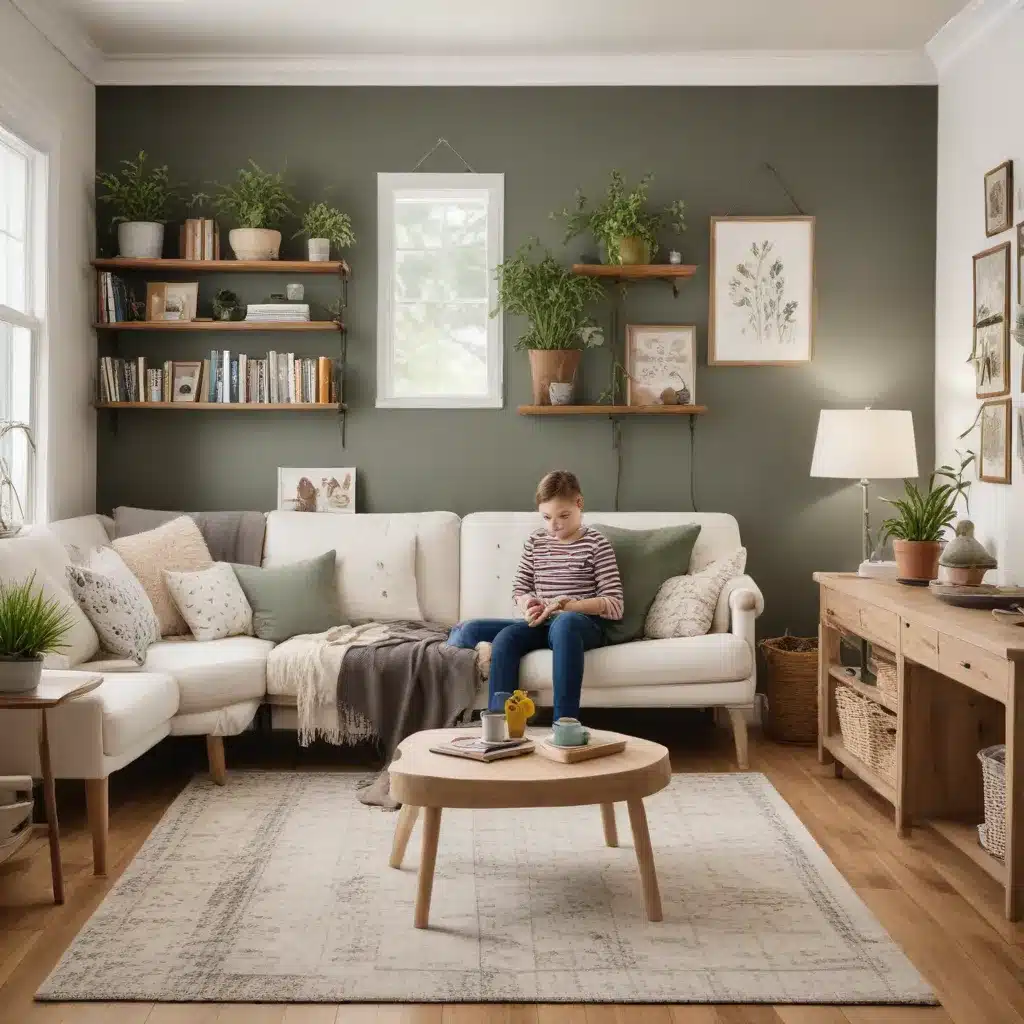
As an experienced home improvement consultant, I understand the unique challenges and joys of creating a family-friendly living environment. Whether you’re a growing household or an empty-nester looking to downsize, designing spaces that cater to the evolving needs of your loved ones is essential for cultivating a harmonious and functional home.
In this comprehensive guide, we’ll explore the key principles of family-focused design, from flexible floor plans and child-friendly features to inclusive design approaches and sustainable living solutions. By the end, you’ll be equipped with the insights and strategies to transform your house into a vibrant, adaptable sanctuary that grows alongside your family.
Flexible Floor Plans
The foundation of a family-friendly home lies in its ability to adapt to changing needs over time. Adaptable room configurations, multifunctional zones, and expandable layouts are crucial elements that allow your living spaces to evolve seamlessly.
Open floor plans, for instance, facilitate seamless flow between communal areas, enabling parents to supervise children while cooking, working, or relaxing. This layout promotes family togetherness and enhances the sense of connectivity within the home. However, it’s important to balance open spaces with strategic zones for privacy and quiet retreat when necessary.
Multifunctional rooms are another valuable asset, transforming from playrooms for young children to dedicated homework nooks or guest suites as your family matures. By incorporating flexible furniture and storage solutions, these versatile spaces can accommodate a wide range of activities, ensuring your home remains relevant and functional.
Child-Friendly Features
Designing a family home also requires a deep understanding of the unique needs and safety considerations for children of all ages. Incorporating safe play areas, age-appropriate furnishings, and dedicated storage solutions can create a nurturing environment that caters to your little ones.
Dedicated play spaces, both indoors and outdoors, allow children to explore, learn, and burn off energy while keeping them within your line of sight. Thoughtful features like built-in toy storage, non-toxic materials, and impact-absorbing flooring can transform these zones into stimulating, yet secure, havens.
As children grow, their interests and needs evolve, so flexible furniture and adjustable design elements can ensure their spaces grow alongside them. Modular shelving, convertible desks, and adaptable lighting solutions enable you to easily reconfigure and repurpose these areas as your family’s requirements change.
Inclusive Design Principles
Beyond catering to the needs of children, a truly family-friendly home should embrace universal accessibility and accommodate diverse abilities and preferences. Incorporating sensory-friendly elements and accommodating diverse needs can create a harmonious environment for all members of your household.
Features like wide doorways, lever-style door handles, and slip-resistant flooring can enhance mobility and independence for family members with physical limitations. Thoughtful lighting design, soothing color palettes, and acoustically-optimized spaces can also provide a calming, sensory-friendly atmosphere.
By prioritizing inclusive design principles, you can ensure that your home is a welcoming and accessible haven for every member of your family, regardless of age or ability.
Sustainable Living Solutions
As you design your family’s dream home, it’s essential to consider the long-term environmental impact of your choices. Energy-efficient systems, eco-friendly materials, and waste reduction strategies can create a sustainable living environment that aligns with your family’s values.
Investing in high-performance insulation, energy-efficient appliances, and smart home technologies can significantly reduce your household’s carbon footprint while lowering utility costs. Incorporating renewable energy sources, such as solar panels or geothermal heating, can further enhance your home’s sustainability.
When selecting materials, prioritize those that are VOC-free, recyclable, and responsibly sourced. This not only supports a healthier indoor environment but also contributes to a more eco-conscious lifestyle.
Nurturing Outdoor Spaces
The outdoor areas of your home play a vital role in fostering family connections and providing a safe, engaging environment for all ages. Family-oriented landscaping, recreational amenities, and a seamless indoor-outdoor flow can transform your property into a true extension of your living spaces.
Designing dedicated play zones, such as playgrounds, sports courts, or gardens, encourages children to explore, exercise, and connect with nature. Incorporating shaded seating areas, barbecue stations, and even covered dining spaces can create inviting gathering spots for the entire family to enjoy.
By blurring the boundaries between your home’s interior and exterior, you can create a harmonious, cohesive living environment that encourages family members to move freely between the two, fostering a sense of unity and well-being.
Fostering Family Connections
At the heart of a family-friendly home lies the ability to cultivate meaningful connections and shared experiences. Shared gathering spaces, personalized decor elements, and opportunities for quality time can all contribute to a home that truly reflects and nurtures your family’s unique dynamics.
Thoughtfully designed communal areas, such as large, multi-purpose living rooms or cozy nooks for family game nights, provide the perfect setting for togetherness. Meanwhile, incorporating personalized touches, like dedicated display spaces for children’s artwork or family memorabilia, can help each member feel valued and connected to the space.
By prioritizing the creation of spaces that facilitate quality time, you can foster a sense of belonging and create lifelong memories within the walls of your family home.
Designing a home that grows alongside your family is a transformative process that requires a deep understanding of your household’s unique needs and aspirations. By embracing flexible floor plans, child-friendly features, inclusive design principles, sustainable living solutions, nurturing outdoor spaces, and fostering family connections, you can create a haven that adapts and evolves with your loved ones.
As you embark on your family-focused renovation or new-build journey, remember to always keep the evolving needs of your household in mind. With the right approach and a touch of creativity, your house can become a personalized, functional, and cherished sanctuary that truly grows with your family. For more inspiring ideas and expert guidance, be sure to visit Reluctant Renovator – your go-to resource for all things home improvement.



